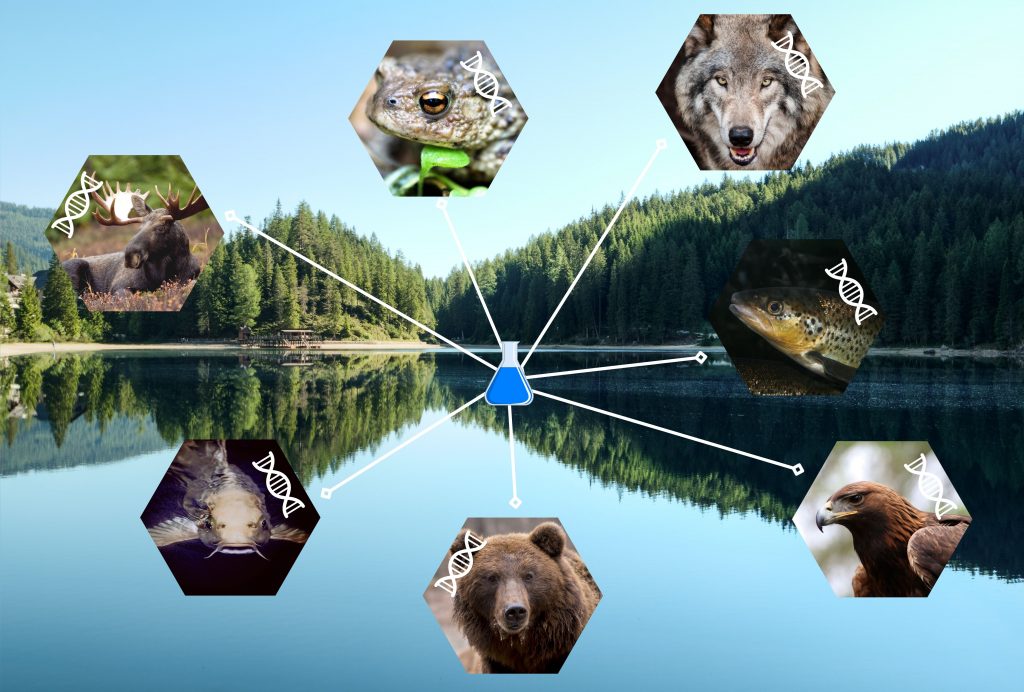Non-Destructive Precision Genomics for Environmental Impact Tracking in a Global Climate Change Era
Why iTrackDNA project?
Canada is a natural resource-exporting nation that values its biodiversity, clean water, and distinctive ecosystems. This vast nation is at a critical juncture with competing interests between rising societal pressure for environmental sustainability and natural resources development. As a result, natural resource management decisions by Canadian communities, Indigenous peoples, industries, and regulators require timely and relevant information regarding risk and impacts of human activities, especially in the context of climate change. The analysis of environmental DNA (eDNA) – genetic material shed from organisms into their environment – is highly promising as eDNA can provide non-destructive, rapid, cost-effective, and accurate biodiversity information.
For example, a single scoop of water from a lake can inform the presence of at-risk, invasive, pest, and culturally & economically important animal species.

However, considerable variation in data quality and poor understanding of factors affecting eDNA detection have hindered adoption in regulatory policy and natural resource management decisionmaking.
End-Users (e.g., governments, First Nations, NGOs, and industry) are all now calling for methods standardization and accessible eDNA resources to support ecological surveys for species-at-risk monitoring; invasive species management; and granting permits and permissions for energy, mining, forestry, manufacturing, and infrastructure projects. Better monitoring tools could help detect live pinewood nematodes and improve wood treatment efficacy testing facilitating Canadian forest products trade, substantially reduce the cost of managing aquatic invasive species through early detection, and protect valuable ecosystems.

